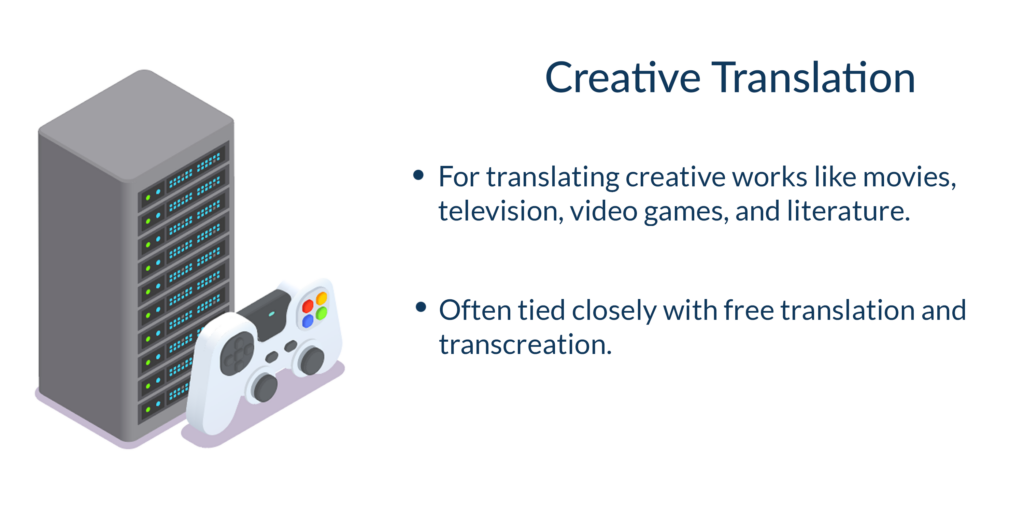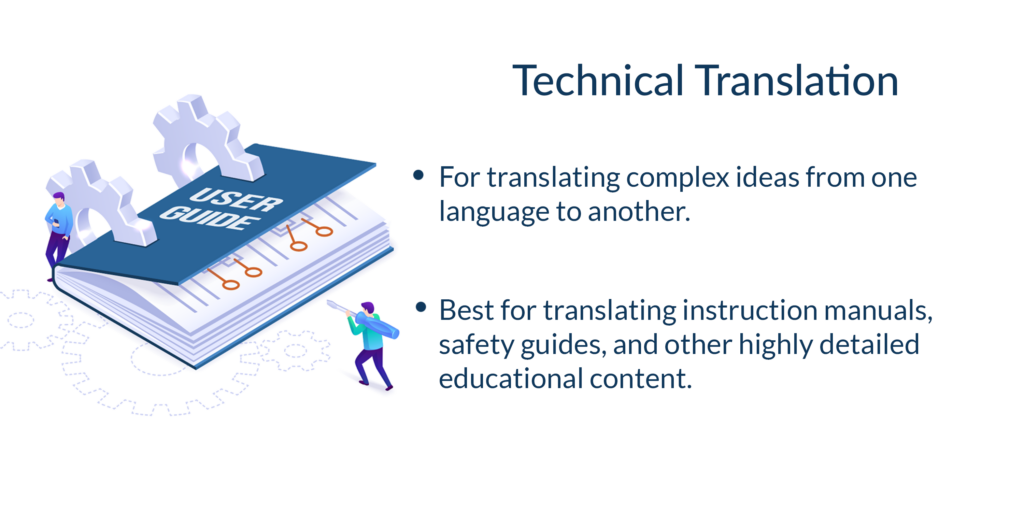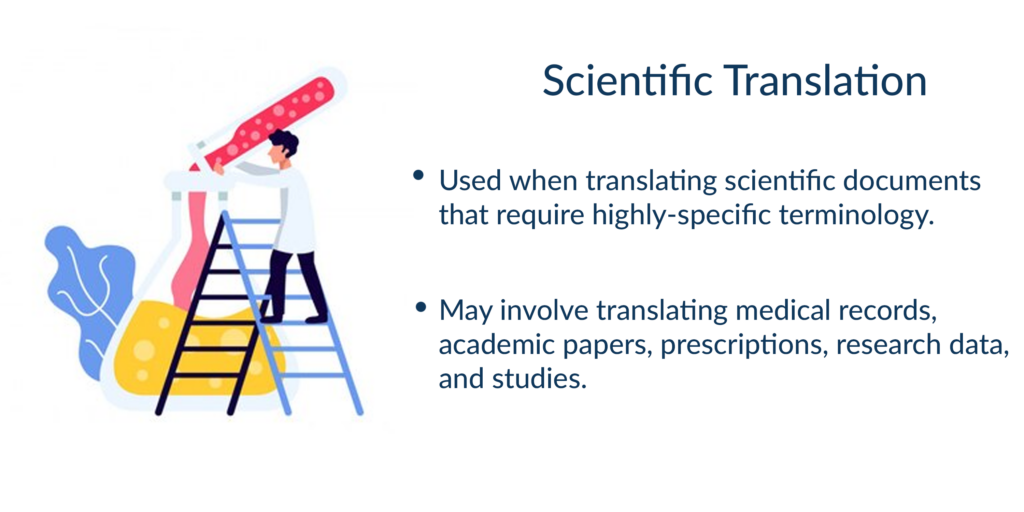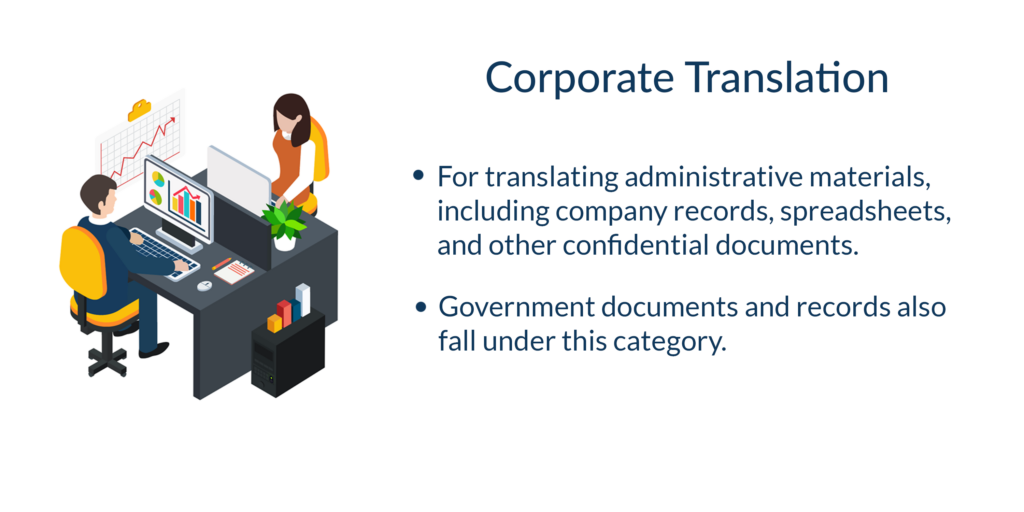In the globalized world we live in, translation is a bridge that connects cultures, facilitates international business, and expands the reach of literature and legal documents to wider audiences. However, not all translations are the same. The process varies significantly depending on the type of content being translated. Here, we delve into the four primary types of translations: Creative, Technical, Scientific, and Corporate.
Types of Translation with Examples
Creative Translation: The Art of Transposing Creativity

Literary translation is a complex and creative endeavor. It involves much more than simply converting words from one language to another; it’s about capturing the essence of the original text. Translators of novels, poems, plays, and short stories must immerse themselves in the cultural context of both the source and target languages. They must understand the author’s intentions, the nuances of literary devices, and the emotional undertones that give the piece its unique flavor.
For example, translating Gabriel García Márquez’s “One Hundred Years of Solitude” from Spanish to English was not only about translating the language but also capturing the magical realism, the tone, and the cultural nuances essential to the story. The translator must convey the poetic and metaphorical elements characteristic of Márquez’s style, making the translation as evocative and profound as the original.
It’s important to mention that literary translation isn’t just for books– all creative works, including television, video games, comics, artwork, and even marketing materials.
Technical Translation: Precision and Specialization

Technical translation is a field where accuracy is paramount. Manuals, engineering texts, product descriptions, and scientific reports fall under this category. The translator must have a deep understanding of the subject matter and be familiar with the specific terminology and jargon used in the field. Any error or ambiguity can lead to misunderstandings or disasters, especially in medicine, engineering, or technology.
For example, translating a user manual for a German-made MRI machine into English for use in hospitals is not only a precise translation of the technical terms used in the manual but also an understanding of the medical terminology and procedures that the users of the MRI machine would be familiar with. The translation must be clear accurate, and use the appropriate technical language for medical professionals.
Scientific Translation: Uniting Academic Research

Scientific translation is a specialized field that requires linguistic skills and a comprehensive understanding of various scientific fields. Academic papers, research documents, and studies all fall under this umbrella, as do medical records, prescriptions, doctor’s notes, and other vital medical documents. When it comes to translating scientific content, translators need a complete understanding of a particular field of study to communicate complex terms to scientists in the target language appropriately.
This type of translation is further complicated because scientific terminology varies from language to language. For example, translating diagnoses or prescriptions has to be exact, as any misinterpretation could alter the patient’s treatment or cause a misdiagnosis. The translator needs to be familiar with the terminology and concepts of both languages
to ensure translations are accurate and information is exchanged as smoothly as possible.
Corporate Translation: Bridging Business Communication

Administrative translation is concerned with the world of business and administration. It encompasses a wide range of documents, from management texts and corporate websites to financial reports and business correspondence. The translator working in this field must have a good grasp of business practices and terminology, as well as the cultural aspects that can influence business relationships.
For example, translating a company’s annual report from Japanese to English for shareholders and regulatory bodies worldwide involves understanding the business terminology, financial jargon, and corporate culture. The translator must ensure that the translated document meets the business and legal standards required in the target language’s country, presenting the company’s performance and strategy accurately.
Although we have discussed four types of translations, it is important to highlight that there may be additional types based on the perspectives of authors who theorize translation practices. In our article, “Types of Translation with Examples,” we explore more than just these four types of translation.
Tools of Translation
In all these types of translation, technology plays a crucial role. Translation memory tools, glossaries, and databases help ensure consistency and accuracy. The best translation tools include CAT (Computer-Assisted Translation) tools, which aid in managing large projects and maintaining terminology databases. However, while these tools are invaluable, they cannot replace the expertise and judgment of a skilled human translator.
CAT Tools for Translation
The five main CAT tools commonly used by translators are:
- SDL Trados Studio: A comprehensive translation software suite with powerful translation memory and terminology management.
- MemoQ: Known for its user-friendly interface and collaboration features, it is a favorite among freelance translators and translation companies.
- Wordfast: A versatile CAT tool offering desktop and cloud-based solutions, focusing on translation memory and ease of use.
- OmegaT: A free, open-source CAT tool that supports multiple file formats and has basic translation memory features.
- Across: Designed for corporate use, this tool provides robust translation memory and terminology management, along with workflow control.
These tools help improve efficiency, consistency, and quality in translation work, each with unique features to suit different translation needs.
Machine Translation
Besides CAT tools, there are other tools like machine translators, which utilize software or AI to translate text. This method is fast and cost-effective but often lacks the nuance and accuracy human translators provide.
What are the 3 Main Techniques Used for Machine Translation?
The three main techniques used for machine translation are rule-based, statistical, and neural machine translation. Rule-based systems rely on linguistic rules and dictionaries; statistical systems use large data sets to predict translations, and neural machine translation employs artificial intelligence to create more fluent and accurate translations.
The 7 Important Translator Skills
The types mentioned above can be quite challenging and demand a diverse set of skills to ensure accurate and effective communication. A skilled translator must possess:
- Linguistic expertise
- Cultural competence
- Specialized knowledge in a particular field of translation
- Research skills
- Attention to detail
- Ethical professionalism
- Adaptability to new translation tools and technologies
This article has touched on the various types of translations, the skills required for translators, and the tools available to aid the translation process. If you’re seeking professional translation services, Traduality offers a platform where you can find vetted linguists for over 200 languages and a range of translation-related services. With their transparent pricing and efficient service, Traduality ensures that your translation needs are met with the highest quality standards. To get started, create your first project and find vetted translators, or book a meeting with us to learn more about your specific needs.
Updated 2/21/2024.





0 Comments